Patio Doors with Built In Blinds: Navigating the Options
Table of Contents
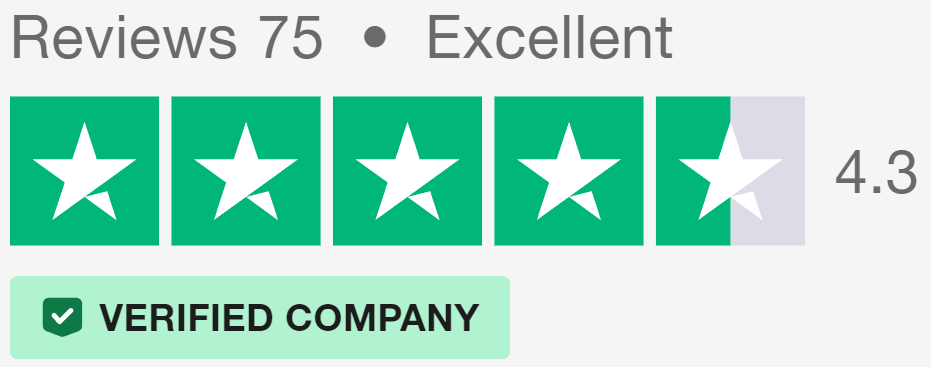
Introduction
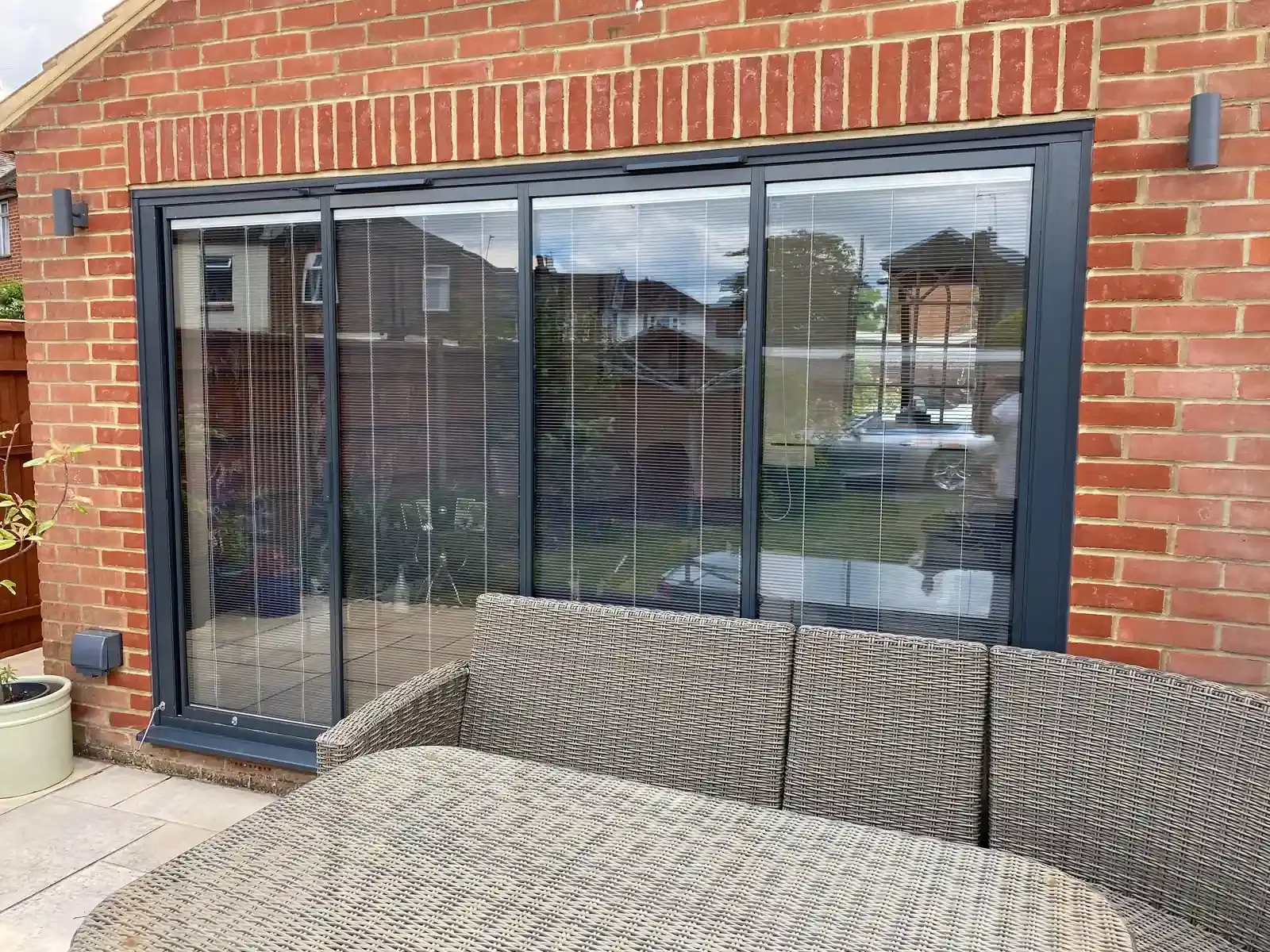
Patio doors with built in blinds offer a fresh take on traditional glass doors. These designs combine the functionality of standard window blinds with the smooth operation of patio doors. Unlike conventional setups where blinds are added after installation, these integrated systems come as a complete package, with the blinds sealed within the double-glazed units.
Built In Blind Terminology
You might hear various terms used to describe this technology. ‘Integral blinds’, ‘integrated blinds’, ‘inbuilt blinds’, and ‘internal blinds’ are common alternatives. These phrases all refer to the same concept: blinds housed within the glass panes of your patio doors. This design protects the blinds from dust and damage, keeping them pristine for years.
Patio Door Types
The market offers several types of patio doors which are often available from some manufacturers with built in blinds. Each type suits different architectural styles and space requirements.
Sliding Patio Doors with Internal Blinds
Sliding doors with built in blinds are a popular choice for many homes. They glide smoothly along tracks, saving space and providing easy access to outdoor areas. The integrated blinds allow for quick adjustments to light and privacy levels without disrupting the door’s sleek profile.
Bifold Patio Doors
Bi fold patio doors with integrated blinds offer flexibility in how you use your space. Bi-fold doors fold accordion-style, opening up entire walls to blend indoor and outdoor living areas. The integrated blinds maintain privacy when needed, without detracting from the bi fold doors’ ability to create wide openings.
French Patio Doors
French doors with internal blinds bring a touch of classic elegance to homes. These hinged patio doors typically open outwards, creating a wide entryway. The addition of built in blinds allows for light control and privacy without compromising the doors’ traditional charm.
Slide and Turn Patio Doors
Slide and turn doors, also known as slide and stack doors, offer a unique opening mechanism. Individual panels slide along a track and then pivot to stack neatly at one end. With built in blinds, these doors provide excellent light management and privacy options while maintaining their distinctive operational style.
Benefits of Patio Doors with Built In Blinds
Patio doors with built in blinds offer numerous advantages over traditional setups. These innovative designs solve common issues associated with conventional blinds while adding value to your home.
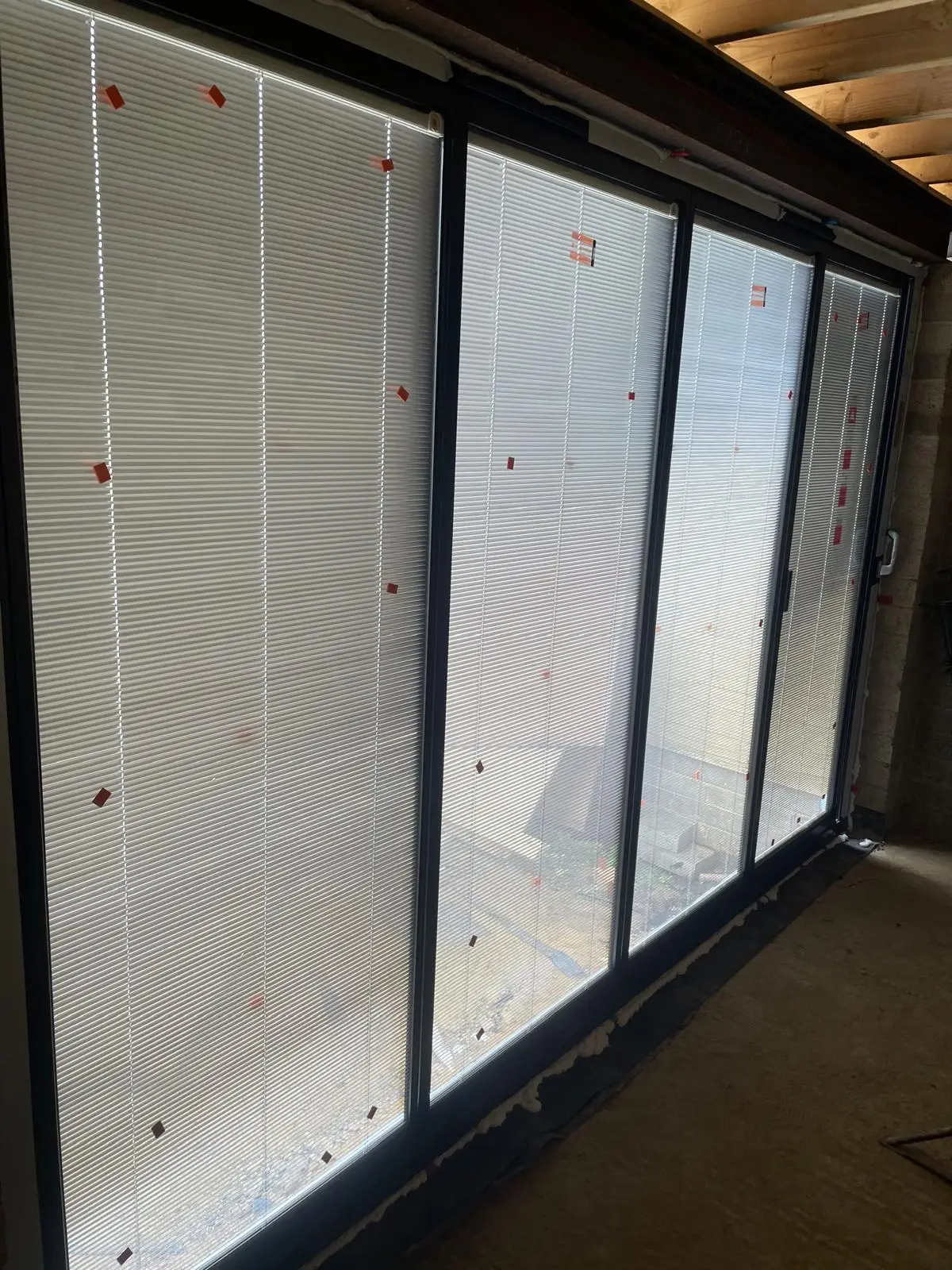
Privacy and Light Control
Built in blinds provide unparalleled control over privacy and light levels. Unlike external blinds that can be cumbersome to adjust, integrated systems allow for quick and easy manipulation. This feature proves particularly useful for floor to ceiling sliding doors, where managing privacy can be challenging.
Glass patio doors often leave homeowners feeling exposed. With built in blinds, you can swiftly adjust the level of seclusion without sacrificing the view. The ability to fine-tune light exposure also helps protect furniture and flooring from sun damage, extending the life of your interior furnishings.
Long-Lasting Design
Durability is a key benefit of patio doors with built in blinds too. Encased within glass panes, these blinds are protected from dust, wind, pet hair, and accidental damage. This enclosure ensures they remain in pristine condition far longer than conventional blinds for patio doors.
The sealed unit also means less maintenance. No more wrestling with tangled cords or struggling to clean hard-to-reach slats. This low-maintenance aspect is particularly appealing for busy households or those with young children and pets.
The integration of blinds within the door unit improves overall energy efficiency too. The extra layer acts as additional insulation, helping to regulate indoor temperatures and potentially reducing energy bills.
Aesthetic Advantages
Patio doors with internal blinds boast a clean, uncluttered look. The absence of external fixtures creates a streamlined appearance that complements various architectural styles. This sleek design is especially beneficial in glass doors for living rooms, for example, where visual appeal is paramount.
The integrated nature of these blinds eliminates the need for additional window treatments. This not only saves money but also preserves the intended design of your patio doors. Sliding doors with integrated blinds maintain their slim profile, allowing for maximum glass area and unobstructed views when desired.
Customising Patio Doors with Built In Blinds
Patio doors with built in blinds offer a range of customisation options to suit various preferences and needs. From control mechanisms to colour choices, these systems can be tailored to complement your home’s style and your lifestyle.
Control Options
Patio doors with internal blinds typically come with three main control types: manual, magnetic, and remote.
Manual operation involves a simple cord or lever system, allowing you to adjust the blinds directly. This traditional method is reliable and cost-effective, making it a popular choice for many.
Magnetic control uses a sliding magnet on the glass surface to move the blinds. This system is particularly useful for sliding doors with internal blinds, as it eliminates the need for external cords or switches. The smooth, cord-free operation adds to the sleek appearance of your patio doors.
For those seeking the ultimate in convenience, remote control options are sometimes available. These systems allow you to adjust your blinds from anywhere in the room, ideal for hard-to-reach areas or for those with mobility issues. These do require electronics and batteries, however, which may have an impact on the longevity of the remote control functionality.
Colour Choices
The colour of your blinds can impact both the appearance and performance of your doors. Many manufacturers offer a wide palette of options, allowing you to match or contrast with your interior design.
Light-coloured blinds can help reflect sunlight, keeping your room cooler in summer. On the other hand, darker shades can absorb heat, potentially useful in colder climates. Some suppliers even offer dual-colour options, allowing different colours on each side of the blind for optimal interior and exterior aesthetics.
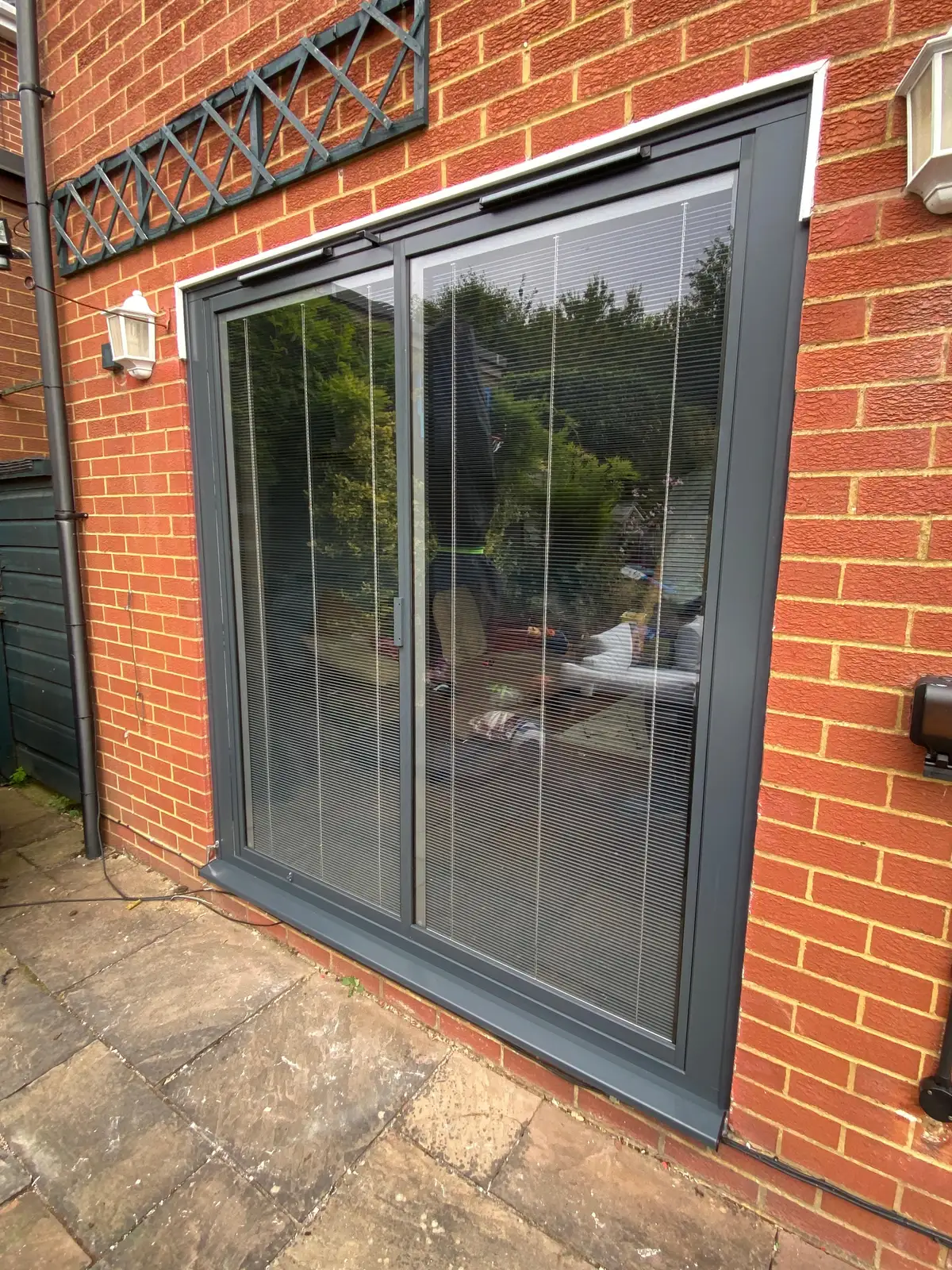
Blind Types and Materials
Two main types of blinds are commonly used in patio doors with integral blinds: venetian and pleated. Each offers distinct advantages and aesthetics.
Venetian blinds, with their horizontal slats, provide excellent light control and privacy. They’re typically made from aluminium, making them lightweight and durable. The ability to tilt the slats allows for precise adjustment of light levels and visibility.
Pleated blinds offer a softer look and are often made from fabric. They operate by folding up accordion-style, providing a neat appearance when open. While they may not offer the same degree of light control as venetian blinds, they can create a warmer, more diffused light in your space.
For those seeking a perfect fit, sliding doors made to measure can incorporate built in blinds tailored to your specific dimensions. This bespoke approach ensures that your patio doors with built in blinds not only function flawlessly but also look as if they were always part of your home’s design.
Energy Efficiency of Patio Doors with Built In Blinds
Patio doors with built in blinds offer more than just aesthetic appeal and privacy control. They can also play a key part in improving your home’s energy efficiency. By providing an extra layer of insulation, these doors help regulate indoor temperatures and potentially reduce energy costs.
U-Values
When shopping for patio doors with inbuilt blinds, you’ll likely encounter the term “U-value”. This measure indicates how effectively a door prevents heat transfer. Lower U-values signify better insulation properties. Sliding patio doors with integral blinds often have lower U-values compared to standard glass doors, thanks to the additional air gap created by the blinds.
The space between the glass panes in these doors acts as an insulating barrier. This design is particularly effective in aluminium patio doors, which typically conduct heat more readily than other materials. The built in blinds help offset this conductivity, improving the overall thermal performance of the door.
Colour Impact on Efficiency
The colour of your built in blinds can affect your door’s energy performance. Light-coloured blinds reflect more sunlight, helping to keep your room cooler in summer. This can be especially beneficial for south-facing patio doors that receive direct sunlight.
Dark-coloured blinds, on the other hand, absorb more heat. While this might seem counterintuitive for energy efficiency, it can be advantageous in colder climates or during winter months. The absorbed heat can help warm the air between the glass panes, providing additional insulation.
Some manufacturers offer blinds with different colours on each side. This dual-colour option allows you to optimise both the interior aesthetics and the energy performance of your patio doors with built in blinds.
Noise Reduction
Beyond thermal insulation, patio doors with built in blinds can also help reduce noise transmission. The extra layer created by the blinds acts as a sound barrier, helping to muffle external noises. This feature can be particularly valuable if your patio area faces a busy street or noisy neighbourhood.
The noise reduction capability varies depending on the type of blind and the overall construction of the door. Pleated blinds, with their fabric construction, tend to absorb sound more effectively than venetian blinds. However, the mere presence of an additional layer within the glass unit contributes to improved acoustic performance.
For optimal noise reduction, look for patio doors with built in blinds that use laminated or acoustic glass. These specialized glass types, combined with integral blinds, can decrease sound transmission, creating a quieter, more peaceful indoor environment.
Colour Impact on Efficiency
The colour of your built in blinds can affect your door’s energy performance. Light-coloured blinds reflect more sunlight, helping to keep your room cooler in summer. This can be especially beneficial for south-facing patio doors that receive direct sunlight.
When examining specifications for patio doors with built in blinds, you’ll often encounter terms like “solar reflection”, “light reflection”, and “solar absorption”. These metrics provide valuable insights into how the blinds interact with sunlight:
- Solar reflection
- The percentage of solar energy reflected by the blinds.
- Light reflection
- The percentage of visible light reflected by the blinds.
- Solar absorption
- The percentage of solar energy absorbed by the blinds.
For example, white blinds typically have high reflection and low absorption rates. Specific measurements might show 70% solar reflection, 78% light reflection, and 30% solar absorption. This means they reflect most of the sun’s energy and light, keeping your room cooler.
In contrast, darker colours absorb more heat. Anthracite grey blinds might have 12% solar reflection, 13% light reflection, and 88% solar absorption. Black blinds absorb even more, with figures around 4% for both solar and light reflection, and 96% for solar absorption.
Dark-coloured blinds can be advantageous in colder climates or during winter months. The absorbed heat can help warm the air between the glass panes, providing additional insulation.
Some manufacturers offer blinds with different colours on each side. This dual-colour option allows you to optimise both the interior aesthetics and the energy performance of your patio doors with built in blinds. By choosing the right colour combination, you can manage solar gain effectively throughout the year, potentially reducing your energy costs.
Choosing Patio Doors with Built In Blinds
Selecting the right patio doors with built in blinds involves carefully weighing various factors.
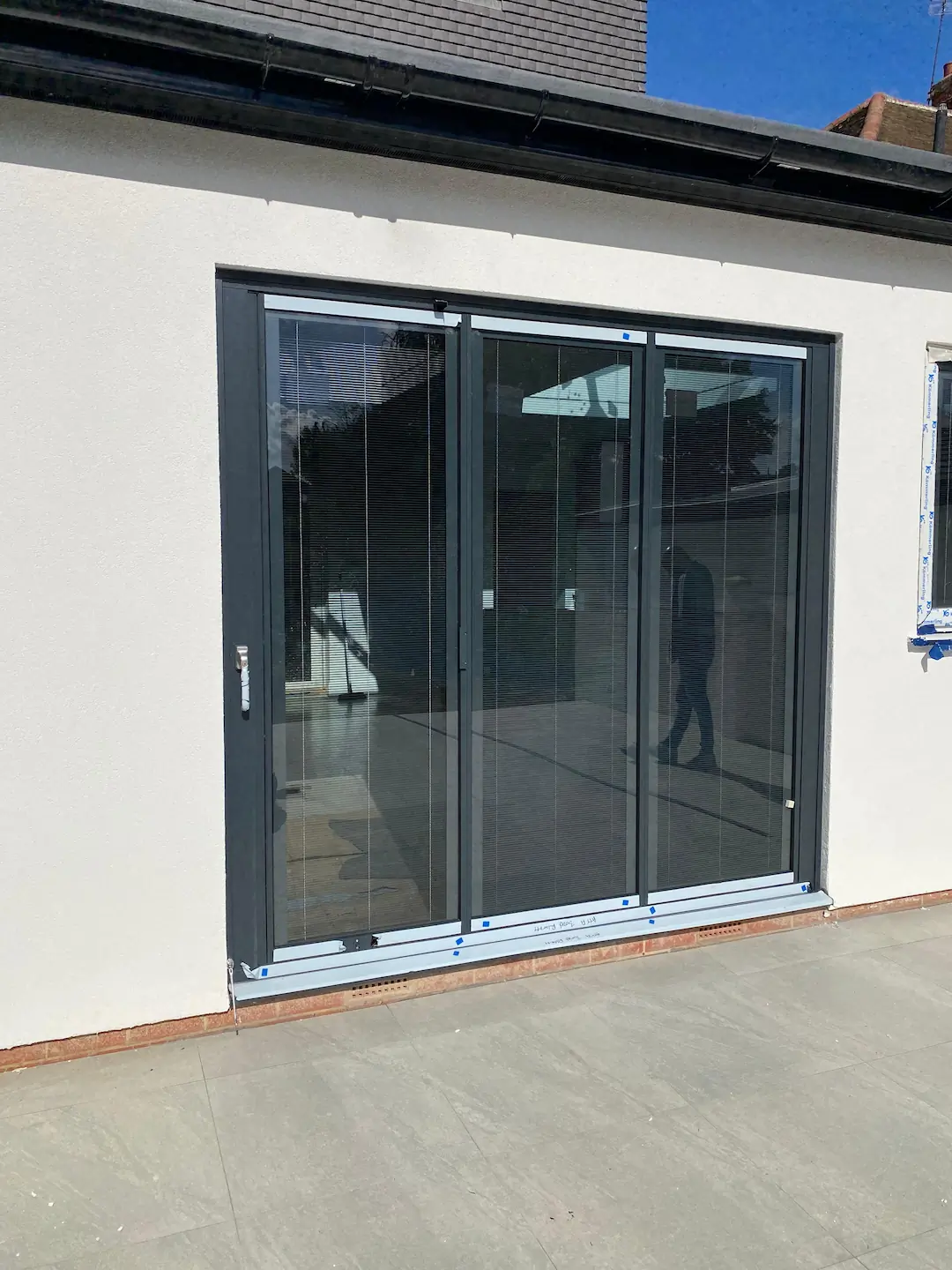
Space Requirements
The available space in your home largely dictates the type of patio doors with internal blinds you can install. Sliding patio doors with built in blinds are ideal for areas where space is at a premium. They operate on a track, with one panel gliding in front of the other, requiring no additional room to open.
For larger openings, aluminium bi-folding doors with integrated blinds offer a striking solution. These doors fold accordion-style, creating a wide aperture when fully open. However, they need clearance space for the folded panels, so ensure your room layout can accommodate this.
If you’re renovating a kitchen, sliding kitchen doors with integral blinds can provide a sleek, modern look while offering easy control over light and privacy. The built in blinds keep the overall design clean and uncluttered, ideal for busy kitchen environments.
Costs
The price of patio doors with built in blinds varies widely depending on several factors. Size, material, glazing type, and the complexity of the blind system all influence the overall cost.
Double-glazed doors with built in blinds typically represent the standard option. They offer good insulation and noise reduction at a moderate price point. For improved thermal performance, triple-glazed doors are available, though at a higher cost.
Aluminium frames often come with a higher price tag than uPVC, but they offer superior strength and slimmer profiles, allowing for larger glass areas. This can be particularly beneficial for sliding doors with integral blinds, where the view is often a priority.
The blind system itself also affects the price. Manual controls are generally the most affordable option, while motorised systems with remote control functionality sit at the higher end of the price spectrum.
Installation Process
For sliding patio doors with built in blinds, the installation typically begins with removing the old door and preparing the opening. The track is then fitted, followed by the door panels. Special care is taken when handling the glass units containing the blinds to avoid damage.
Bifold doors with integrated blinds require precise alignment to ensure smooth operation. The track must be perfectly level, and each panel needs to be carefully adjusted. This is particularly important for corner bifold doors or sliding doors, where two sets of doors meet at an angle.
The final step involves connecting and testing the blind control mechanism. For motorised systems, this may include setting up remote controls or integrating with smart home systems.
Maintenance and Longevity
One of the key benefits of patio doors with inbuilt blinds is their low maintenance requirements. The blinds, protected within the glazing unit, are shielded from dust, dirt, and physical damage.
Regular cleaning of the glass and frames is usually sufficient to keep your doors looking their best. For aluminium bi-folding doors, occasional lubrication of the hinges and rollers helps ensure smooth operation.
The longevity of patio doors with built in blinds largely depends on the quality of the materials and installation. Well-made doors can last for decades with proper care. The blind mechanism, being protected from the elements, often outlasts external blind systems.
However, in the rare event that the blinds malfunction, repair can be more complex than with traditional blinds. It’s worth discussing the warranty and repair process with your supplier before making a purchase.
We’d Love to Help You
Vision Glass Doors is a designer, manufacturer, and installer of premium door systems. We are a family run business with over 20 years’ experience and 5,000 installations across the UK.
Our leading range of door systems include Ultra Slim – Slide and Turn Doors, Slimline Sliding Patio Doors and Frameless Glass Doors. Suitable for various internal and external applications, they are applicable to residential and commercial projects.
Click Quick Quote Online for a free quotation within 24 hours. Alternatively, call or email us on 01582 492730 or at info@visionglassdoors.co.uk.

